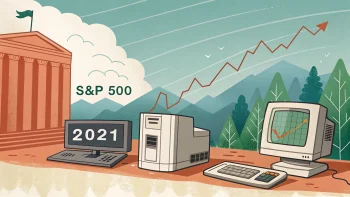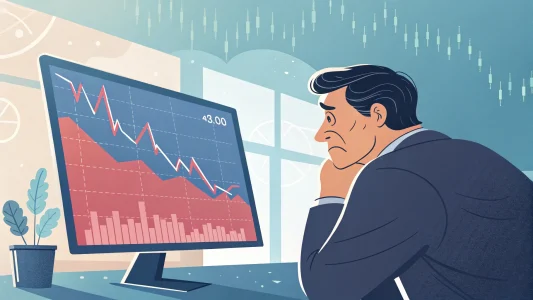Alright, Life Goal Nation! Over the past few years, global economies have witnessed dramatic changes due to various factors like the COVID-19 pandemic, changes in fiscal policies, and geopolitical tensions. Among these changes, inflation has emerged as one of the major concerns for investors and analysts alike. In this in-depth analysis, we will discuss recent trends in inflation, particularly in the United States, and explore their implications for financial markets. We will also attempt to predict how these trends may evolve in the near future and provide insights on how investors can prepare for and navigate these challenges.
See Also: 7 Wealth Generation Strategies for Inflationary Times
Table of Contents
ToggleAn Overview of Inflation Trends
In recent times, the United States has experienced significant spikes in inflation rates. As of last week, the inflation rate dropped from 4% to 3%, which marked the stock market’s best week since March. However, this decline in inflation is not likely to continue, due to the unique way inflation is measured. Inflation is calculated using a rolling one-year number, meaning each new month of data replaces corresponding data from the previous year.
A closer look at the month-over-month inflation increases in the US over the past two years reveals that the second half of 2021 and the first half of 2022 were characterized by intense inflationary pressures. As these major inflationary figures rolled off, a notable drop in inflation rates followed. The decline of inflation from 4% to 3% can be attributed to the rolling off of last June’s Consumer Price Index (CPI) increase of 1.2% in just one month.
Challenging Inflationary Comparisons Ahead
Despite the recent drop in inflation rates, it is essential to note that the upcoming months’ comparative figures do not favor a continued downward trend. This is because July’s numbers will be compared to last July’s modestly negative inflation rate. If any positive inflation is recorded this month, the annualized inflation rate will rise again.
As a result, investors should not be surprised to see the annual inflation figure ticking back up in the near future. These expectations are underscored by the tougher comparisons from last year that lie ahead. This paints a picture of a challenging environment for the markets as they grapple with uncertain inflationary trends.
Predicting Market Reactions to Inflation
The renewed acceleration of inflation will likely have wide-ranging implications for the financial markets. Higher inflation generally leads to higher interest rates, which can have a negative impact on both stock and bond markets. Stocks may suffer due to higher borrowing costs for companies, which can negatively affect corporate earnings and, by extension, share prices. Bonds can also be negatively impacted, as rising interest rates lead to falling bond prices.
In the face of these challenges, investors might look for opportunities in sectors more resilient to inflationary pressures. For instance, investments in tangible assets like commodities, real estate, and infrastructure can provide a hedge against inflation. Additionally, investors might consider companies with pricing power – the ability to pass on cost increases to consumers – making these companies more resilient to inflationary pressures.
Another strategy that investors can adopt during times of higher inflation is to focus on high-quality stocks with strong balance sheets and reliable cash flows. These companies can be better positioned to withstand the negative impacts of inflation.
See Also: 5 Ways to Navigate Today’s Investing Strategies
Although predicting market reactions to future inflation trends remains challenging, investors can employ various strategies to safeguard their portfolios:
- Diversify investments across different asset classes and sectors.
- Focus on quality stocks and companies with strong financial positions.
- Consider alternative investments like real estate and commodities as hedges against inflation.
- Monitor inflation trends and government policies closely to make informed investment decisions.
Conclusion
Overall, the months ahead will likely show a resurgence in inflation, shaking the recent downward trend. As such, investors should brace themselves for the challenges ahead, as markets grapple with hard-to-predict inflationary pressures. By keeping an eye on economic indicators and following sound investment strategies, investors can better prepare themselves for the impact of these changes on their portfolios. Ultimately, awareness and adaptability will be key to navigating these inflationary challenges in the ever-evolving world of finance.
FAQ
1. What are the primary concerns discussed in this analysis?
This analysis highlights the significant inflation concerns, particularly in the United States. It explores recent trends in inflation and their implications for financial markets.
2. What has been the recent trend in inflation rates in the United States?
The United States has experienced significant spikes in inflation rates. While there was a decline from 4% to 3% recently, this is not expected to continue due to the rolling one-year calculation method used for measuring inflation.
3. What factors contribute to the recent drop in inflation rates?
The decline in inflation rates from 4% to 3% is primarily attributed to the rolling off of last June’s Consumer Price Index (CPI) increase of 1.2% from the calculation.
4. What can be expected in terms of future inflation trends?
The upcoming months’ comparative figures do not favor a continued downward trend in inflation rates. July’s numbers will be compared to a modestly negative inflation rate from last July, and any positive inflation recorded this month will increase the annualized inflation rate.
5. How might financial markets react to renewed inflationary pressures?
Higher inflation rates can lead to higher interest rates, which can negatively impact both stock and bond markets. Companies may face higher borrowing costs, impacting their earnings and share prices. Rising interest rates can also result in falling bond prices.
6. What strategies can investors adopt to navigate inflationary pressures?
Investors can consider diversifying their investments across different asset classes and sectors. Investing in real assets like commodities, real estate, and infrastructure can serve as a hedge against inflation. Focusing on quality stocks with strong financial positions and reliable cash flows can also be beneficial. Monitoring inflation trends and government policies closely is vital for making informed investment decisions.
7. How can investors safeguard their portfolios amid inflationary challenges?
Investors can safeguard their portfolios by diversifying investments, focusing on quality stocks, considering alternative investments as hedges against inflation, and closely monitoring inflation trends and government policies.
8. What is the overall message of this analysis?
The analysis emphasizes the likelihood of a resurgence in inflation in the coming months and its challenges for financial markets. By staying informed and employing sound investment strategies, investors can better prepare for the impact of inflation on their portfolios. Adaptability and awareness are key in navigating these inflationary challenges in the ever-changing world of finance.
Featured Image Credit: Photo by Erik Mclean; Pexels; Thank You!

















